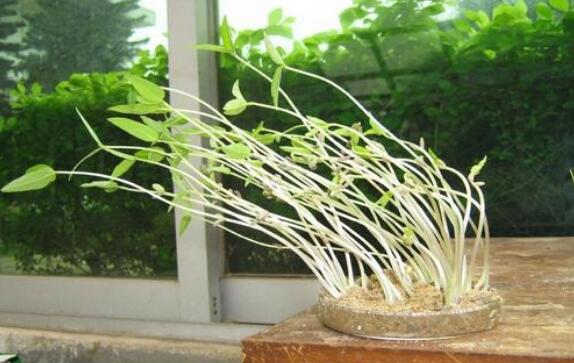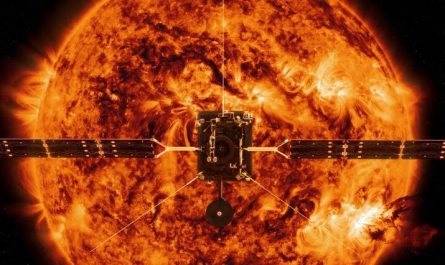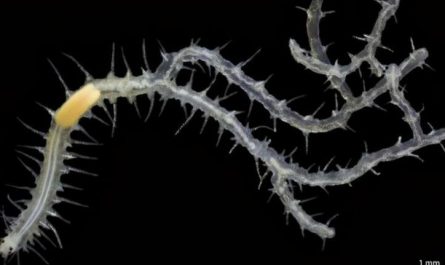The most wonderful thing about a plant’s response to its surrounding environment is its growth direction. For example, the flower of a sunflower always turns with the sun, and it is like a small plant seed. From the beginning of germination, it knows that the roots should grow underground, and the stems should extend to the sky. This is an extremely common phenomenon, but why do plants grow like this? It is really not easy to answer this question.
Sunflower is a familiar plant. In the early morning, when the sun rises from the east, its flowers will naturally face the rising sun; when the sun sets in the west, its flowers will turn to the west again, as if sending the sun away.
As early as more than 100 years ago, Darwin, a famous British biologist, became interested in the phenomenon of sunflower flowers turning with the sun. He wanted to know the secret, so he conducted a series of experiments. One of the experiments was simple, but it could explain the problem.
Darwin cultivated some flowers and plants in the room, and when the seedlings broke out of the soil in the pot, they all leaned toward the light-transmitting window. Obviously, light has a lot to do with the growth direction of plants. Darwin felt very surprised, what exactly is the control of the sunny growth of plants?
According to intuition, this strange thing may be near the top bud of the plant. So Darwin cut off a piece of the top bud of the seedling, and the result was completely changed. Although the seedling was still growing upwards, it would never bend in the direction of the sun anymore. This experiment convinced Darwin that at the top of the seedling, there must be a magical substance manipulating the growth direction of the plant. It is a pity that under the research conditions at the time, Darwin passed away without discovering such a substance.
Research on the direction of plant growth has never stopped, and other scientists are still exploring the mysteries. It was not until 1926 that people finally found this miraculous substance.
The discoverer was American plant physiologist Winter. He did such an experiment in which the coleoptile of the plant was exposed to light on one side and the other facing a dark place with no light. As a result, the coleoptile gradually bends in the direction of light. Winter has performed a special treatment on the coleoptile and isolated a novel compound from it, named auxin.
The biggest role of auxin is to direct plant growth. In the plant body, according to the different environmental conditions, such as different light, different temperature and humidity, different locations, etc., timely “issue” orders to determine how the various organs of the plant should grow, or to what extent. The most suitable.
Because auxin is very sensitive to light, when the coleoptile is exposed to light, it gathers on the shade side. In this way, the increase and accumulation of auxin greatly accelerates the growth of the shadow part, and the light-receiving part grows slowly due to the lack of auxin, resulting in bending. Winter asserted that the curvature of plant stems or leaves is entirely caused by the asymmetric distribution of auxin in the tissue.
The phototropic growth of plants is controlled by auxin, so how does it distinguish between “up” and “down”? What force prompted it to choose the root-down and stem-up growth mode? Scientists first think of gravity. They believe that the gravity of the earth must be an important factor affecting the growth direction of plants.
People began to cultivate plants on the space station to see if plants can distinguish between “up” and “down”. Theoretically, under the weightless environment of space, coupled with sufficient light 24 hours a day, the conditions for plant growth are much better than those on Earth. Scientists expect that the space station will produce wheat grains the size of red dates, eggplants and peppers the size of watermelons. But the initial results of the experiment were terrible.
It was 1975. After the astronauts planted the wheat seeds on the Soviet “Salute 4” spacecraft, the condition was good at the beginning. The wheat sprouted much faster than on the earth. In just 15 days, it grew to 30 cm long. Although it does not understand the “up and down”, without direction and goal, it is a gratifying phenomenon after all. But after that, the situation became worse and worse. Not only did the wheat fail to ear and bear fruit, but the stems and leaves gradually turned yellow, showing symptoms of dying.
Obviously, the main cause of trouble for plant growth is weightlessness. Why do plants rely so much on gravity? According to Winter’s auxin theory, it can be explained as follows: plants that have lived on the earth for a long time have formed a unique physiological phenomenon. When it is stimulated by gravity, the auxin content in the lower part of the plant tissue will greatly increase, so The root of the plant grows downward and the stem grows upward. Once the gravity is lost, the auxin will not be able to gather in the right place, so that the young stems can’t find the correct growth direction and can only stretch out in disorder, eventually leading to death.
If the weightlessness problem is solved, can auxin return to its proper position? The scientist decided to conduct more in-depth experiments.
To solve the problem of weightlessness, the most direct method is to establish an artificial gravity field, but it is very difficult to implement this method on a small space station. At this time, a Soviet physiologist named Rasikoff put forward a point of view, he said: “Electricity plays a huge role in the entire biological world. On the surface of the earth, plants pass through stems and leaves all the time. The atmosphere emits a certain amount of electron flow. This will have a great impact on plant nutrients and water supply. In addition, there is a significant potential difference between the soil and plants on the earth, which is beneficial for plants to absorb nutrients from the soil In the case of weightlessness, there is no potential difference between the plant and the soil, and no more electrons are emitted into the air, so it is difficult to survive.”
According to this view, scientists designed a gyrator, planting shallots on the gyrator and changing the direction every two seconds, that is, within two seconds, the plant is turned from the normal state (green leaves upward) to the opposite direction ( The green leaves face down). This is equivalent to the absence of “up” and “down” in plants under weightlessness. Of the two shallots on the gyrator, one is powered and stimulated by a certain voltage, while the other is not powered. As a result, the leaves of the green onion that was not connected to the power supply began to grow scattered around on the fourth day; after another two days, the leaves began to wither and shrink, tending to die. And the other green onion that was stimulated by electricity was just the opposite of its partner, just like growing in a vegetable field, green, tall and strong.
Later, scientists exchanged these two shallots, and within a week, a miracle happened. The onion that was about to die had taken off its withered leaves and re-grew fresh green leaves; while the original onion that was full of vitality, because of the loss of electrical stimulation, quickly stopped growing, and the leaf tips became yellow and curled.
The success of the electrical stimulation experiment not only brings good news to the astronauts, enabling them to eat fresh vegetables and fruits, but also enables scientists to have a deeper understanding of who controls the direction of plant growth.
Just as everyone was focusing on auxins, Mike Evans, a botanist at Ohio State University in the United States, proposed a new theory. He believes that inorganic calcium plays an important role in the growth direction of plants. Because he discovered in his research that during the curved growth of plants, there is a large amount of inorganic calcium in the lower part of the root cap or the upper part of the bud. So, how does inorganic calcium help plants discern directions?
Evans explained that because there are extremely abundant amyloid-containing cells in the root cap, amyloid is a place where a large amount of inorganic calcium is stored. Under the action of gravity, the amyloid will send the internal calcium to the root cap. side. At this time, if special experimental methods are used to prevent the movement of calcium, plants will immediately show abnormal growth patterns. Similarly, although plant buds do not have a crown, they are also rich in amyloid, which can also send internal calcium to the upper cells. Since the upper and lower ends of the cell have different electric charges, the inconsistency of the electric charges at both ends causes the cell to polarize. As a result, a large number of polarized cells are arranged together, and the total charge is strong enough to attract any oppositely charged calcium ions, drive them to move in the body, and guide the stems of plants to grow upwards and roots downwards.
Who controls the growth direction of plants? What does this magical power depend on, is it auxin or inorganic calcium? Or is it both? This is still a mystery to be explored.






